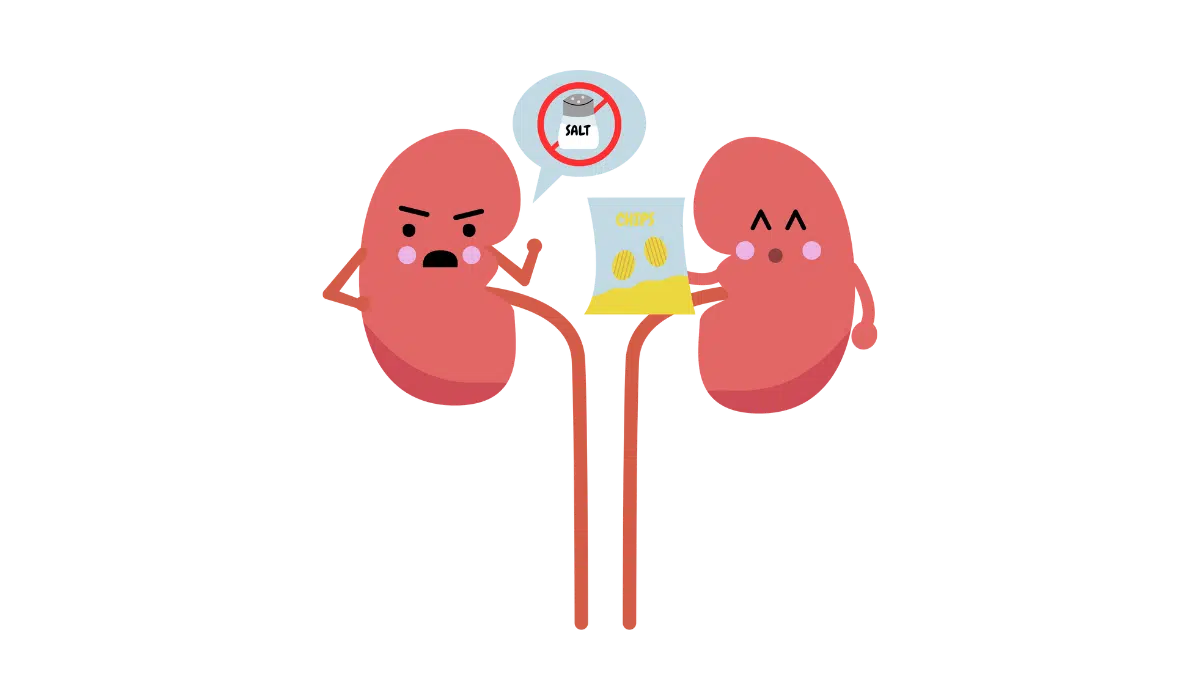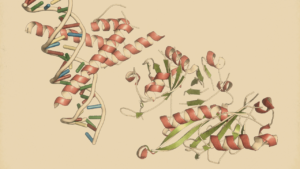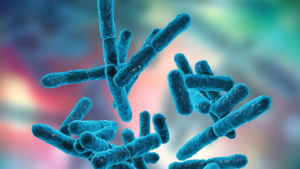Gut Check: Microbes, Inflammation, and Kidney Wellness
Explore the role of gut-kidney axis dysbiosis in kidney diseases. Discover the unexpected connection between kidney stones and gut microbes.

Key points
- Gut-Kidney Axis Interaction: The gut-kidney axis is a vital connection between the gastrointestinal tract and the kidneys, mediated by metabolic and immune pathways. It involves the absorption of beneficial microbial metabolites by the intestines and the kidney's role in excreting potentially toxic metabolic end-products.
- Metabolism-Dependent and Immune Pathways: This axis operates through both metabolism-dependent and immune pathways. An unbalanced diet can lead to dysbiosis, causing the accumulation of harmful metabolites in the gut and disrupting the gut barrier. This can result in inflammation in the kidneys through the entry of toxins.
- Impact on Kidney Diseases: Gut-derived uremic toxins, including p-cresyl, indoxyl sulphates, and TMAO, have been linked to the progression of chronic kidney disease (CKD) and an increased cardiovascular risk. This gut-kidney interaction is involved in various clinical manifestations, including CKD, acute kidney injury (AKI), hypertension, kidney stone disease, and more.
- Gut Dysbiosis in CKD: In CKD, alterations in the gut microbiota, such as reduced microbial diversity and specific changes in microbial composition, have been observed. These changes are associated with the progression of CKD, and certain microbial markers may serve as diagnostic tools for CKD.
- Role of Prebiotics: Clinical trials have shown that prebiotics, probiotics, and synbiotics can help decrease the levels of uraemic toxins and reduce inflammation in kidney diseases. Prebiotic supplementation has demonstrated positive effects in improving gut dysbiosis in CKD patients, suggesting a potential therapeutic avenue for kidney diseases.
Introduction
In the intricate web of human health, there exists a remarkable alliance between the gut and the kidneys.
This partnership, often referred to as the "gut-kidney axis," is not just a passive interaction; it's a dynamic interplay that significantly influences our overall well-being.
At the heart of this symbiotic relationship lies an intricate ecosystem of microbes, metabolic pathways, and immune responses.
In this exploration, we embark on a journey through this captivating landscape to unravel the role of gut microbes in shaping kidney wellness and how inflammation can both challenge and protect this vital harmony.
Welcome to "Gut Check: Microbes, Inflammation, and Kidney Wellness" where we delve into the fascinating world of the gut-kidney axis and its profound implications for our health.
In This Article:
Gut-Kidney Connection: Impact on Health
The gut-kidney axis reveals a vital connection between your gut and kidneys, influencing your well-being through metabolism and immune pathways. A Trusted Source Yang, T.; Sumners, E.; Pepine, C.; Raizada, M. The gut microbiota and the brain–gut–kidney axis in hypertension and chronic kidney disease. Nat. Rev. Nephrol. 2018, 14, 442–456. [Google Scholar] [CrossRef]
Your gut absorbs beneficial microbial products while your kidneys maintain balance by eliminating harmful metabolic by-products.
A poor diet can lead to gut imbalance (dysbiosis), causing the buildup of toxins like p-cresyl and indoxyl sulfates in your gut. A Trusted Source Evenepoel, P.; Poesen, R.; Meijers, B. The gut-kidney axis. Pediatr. Nephrol. Berl. Ger. 2017, 32, 2005–2014. [Google Scholar] [CrossRef]
This disrupts your gut barrier, allowing toxins to enter your kidneys, sparking inflammation.
Simultaneously, your immune system responds to imbalanced gut bacteria, further triggering inflammation. A Trusted Source Giordano, L.; Mihaila, S.M.; Amirabadi, H.E.; Masereeuw, R. Microphysiological Systems to Recapitulate the Gut–Kidney Axis. Trends Biotechnol. 2021, 39, 811–823. [Google Scholar] [CrossRef] [PubMed]
These interactions link gut health to conditions like chronic kidney disease, hypertension, and more. A Trusted Source El Chamieh, C.; Liabeuf, S.; Massy, Z. Uremic Toxins and Cardiovascular Risk in Chronic Kidney Disease: What Have We Learned Recently beyond the Past Findings? Toxins 2022, 14, 280. [Google Scholar] [CrossRef]
Understanding this connection can empower your health journey.
Gut Microbiome's Role in Chronic Kidney Disease
Chronic kidney disease (CKD) is a prevalent condition impacting approximately 10% of the global population, imposing substantial burdens on society, the economy, and healthcare systems. A Trusted Source Feng, Z.; Wang, T.; Dong, S.; Jiang, H.; Zhang, J.; Raza, H.K.; Lei, G. Association between gut dysbiosis and chronic kidney disease: A narrative review of the literature. J. Int. Med. Res. 2021, 49, 030006052110532. [Google Scholar] [CrossRef]
CKD is characterized by the gradual loss of kidney function, leading to the accumulation of toxic substances and elevated urea levels in the bloodstream, resulting in a condition known as uremia. A Trusted Source Stavropoulou, E.; Kantartzi, K.; Tsigalou, C.; Konstantinidis, T.; Romanidou, G.; Voidarou, C.; Bezirtzoglou, E. Focus on the Gut–Kidney Axis in Health and Disease. Front. Med. 2021, 7, 620102. [Google Scholar]
Untreated CKD can progress to end-stage kidney disease (ESKD), for which effective treatments are currently lacking, leaving patients with limited options such as dialysis and kidney transplantation. A Trusted Source Giordano, L.; Mihaila, S.M.; Amirabadi, H.E.; Masereeuw, R. Microphysiological Systems to Recapitulate the Gut–Kidney Axis. Trends Biotechnol. 2021, 39, 811–823. [Google Scholar] [CrossRef] [PubMed]
Recent research has shed light on the gut microbiome (GM) as a key player in the development of CKD, with notable findings:
(1) Changes in GM Composition in CKD Patients
Studies have demonstrated quantitative and qualitative alterations in the GM of CKD patients, including reduced microbial richness, diversity, and uniformity. A Trusted Source Khiabani, S.; Asgharzadeh, M.; Kafil, H. Chronic kidney disease and gut microbiota. Heliyon 2023, 9, e18991. [Google Scholar] [CrossRef]
CKD patients exhibit increased levels of certain bacteria such as Lachnospiraceae, Enterobacteriaceae (Enterobacter, Klebsiella, Escherichia), Enterococci, Clostridium perfringens, and specific Ruminococcaceae, along with decreased levels of Prevotellaceae, Bacteroidaceae, Lactobacillus, and Bifidobacterium species. A Trusted Source Rukavina, N.; Kouyoumdzian, N.; Choi, M. Gut microbiota and chronic kidney disease: Evidences and mechanisms that mediate a new communication in the gastrointestinal-renal axis. Pflügers Arch. -Eur. J. Physiol. 2020, 472, 303–320. [Google Scholar] [CrossRef] A Trusted Source Chen, D.-Q. Microbiome–metabolome reveals the contribution of gut–kidney axis on kidney disease. J. Transl. Med. 2019, 17, 5. [Google Scholar]
The most consistent findings involve reduced Lactobacillaceae and Bifidobacteriaceae levels, along with elevated Enterobacteriaceae. A Trusted Source Khiabani, S.; Asgharzadeh, M.; Kafil, H. Chronic kidney disease and gut microbiota. Heliyon 2023, 9, e18991. [Google Scholar] [CrossRef]
In a study by Vaziri et al., it was found that uraemia significantly alters GM composition in end-stage renal disease (ESRD) patients. A Trusted Source Vaziri, N.; Wong, J.; Pahl, M.; Piceno, Y.; Yuan, J.; DeSantis, T.; Ni, Z.; Nguyen, T.-H.; Andersen, G. Chronic kidney disease alters intestinal microbial flora. Kidney Int. 2012, 83, 308–315. [Google Scholar] [CrossRef]
Notably, certain bacterial families like Brachybacterium, Catenibacterium, Enterobacteriaceae, and others were elevated in ESRD patients, while Prevotellaceae and Lactobacillaceae were reduced.
(2) GM Differences in Early-Stage CKD
Hu et al. observed GM composition differences between early-stage CKD patients and healthy individuals, noting reduced GM diversity in CKD patients. A Trusted Source Hu, Q.; Wu, K.; Pan, W.; Zeng, Y.; Hu, K.; Chen, D.; Huang, X.; Zhang, Q. Intestinal flora alterations in patients with early chronic kidney disease: A case-control study among the Han population in southwestern China. J. Int. Med. Res. 2020, 48, 030006052092603. [Google Scholar] [CrossRef]
The presence of Ruminococcus and reduced Roseburia proved to be reliable indicators for distinguishing early-stage CKD patients from healthy controls.
A lower abundance of Roseburia in CKD patients, especially in early stages, suggests its potential as a marker of GM dysbiosis. A Trusted Source Luminita, V.; Burlacu, A.; Brinza, C.; Covic, A.; Balan, G.; Nistor, I.; Popa, C.; Hogas, S.; Covic, A. Gut Microbiota in Chronic Kidney Disease: From Composition to Modulation towards Better Outcomes—A Systematic Review. J. Clin. Med. 2023, 12, 1948. [Google Scholar] [CrossRef]
(3) GM and CKD Severity
Studies have shown that the relative abundance of Proteobacteria, particularly the family Enterobacteriaceae and genera Escherichia, gradually increases with CKD severity, hinting at Proteobacteria as a potential microbial diagnostic marker for GM dysbiosis. A Trusted Source Shin, N.-R.; Whon, T.; Bae, J.-W. Proteobacteria: Microbial signature of dysbiosis in gut microbiota. Trends Biotechnol. 2015, 33, 496–503. [Google Scholar] [CrossRef] A Trusted Source Hu, X.; Ouyang, S.; Xie, Y.; Gong, Z.; Du, J. Characterizing the gut microbiota in patients with chronic kidney disease. Postgrad. Med. 2020, 132, 495–505. [Google Scholar] [CrossRef] [PubMed]
Moreover, Roseburia levels tend to diminish as CKD progresses. A Trusted Source Wang, S.; Lv, D.; Jiang, S.; Jiang, J.; Liang, M.; Hou, F.; Chen, Y. Quantitative reduction of short-chain fatty acids, especially butyrate, contributes to the progression of chronic kidney disease. Clin. Sci. 2019, 133, 1857–1870. [Google Scholar] [CrossRef]
In summary, CKD patients exhibit distinct GM profiles characterized by variations in specific genera and species.
These GM alterations hold promise as valuable indicators in clinical models, facilitating the differentiation between healthy individuals and those with CKD.
These GM alterations hold promise as valuable indicators in clinical models, facilitating the differentiation between healthy individuals and those with CKD. A Trusted Source Ren, Z.; Fan, Y.; Ang, L.; Shen, Q.; Wu, J.; Ren, L.; Lu, H.; Suying, D.; Ren, H.; Liu, C.; et al. Alterations of the Human Gut Microbiome in Chronic Kidney Disease. Adv. Sci. 2020, 7, 2001936. [Google Scholar] [CrossRef]

Understanding the intricate relationship between CKD and the gut microbiome opens up new avenues for potential interventions and personalized treatments.
HIGHLIGHT
The gut microbiome plays a crucial role in chronic kidney disease (CKD), with alterations in microbial composition serving as potential diagnostic markers for CKD severity and progression.
Gut-Kidney Axis: Understanding Kidney Stone Disease
Kidney stones, a prevalent ailment affecting 10-15% of the global population, pose serious health risks and complications. A Trusted Source Shruti, G.; Kanwar, S. The influence of dysbiosis on kidney stones that risk up renal cell carcinoma (RCC). In Seminars in Cancer Biology; Academic Press: Cambridge, MA, USA, 2020; Volume 70. [Google Scholar] [CrossRef]
The most common type, calcium oxalate, accounts for 76% of cases. A Trusted Source Singh, P.; Enders, F.; Vaughan, L.; Bergstralh, E.; Knoedler, J.; Krambeck, A.; Lieske, J.; Rule, A. Stone Composition Among First-Time Symptomatic Kidney Stone Formers in the Community. Mayo Clin. Proc. 2015, 90, 1356–1365. [Google Scholar] [CrossRef]
Prolonged kidney stone presence can lead to reduced kidney function and an increased risk of cancer. A Trusted Source Shruti, G.; Kanwar, S. The influence of dysbiosis on kidney stones that risk up renal cell carcinoma (RCC). In Seminars in Cancer Biology; Academic Press: Cambridge, MA, USA, 2020; Volume 70. [Google Scholar] [CrossRef]
Recent research delves into the gut microbiota's role in kidney stone disease, with a focus on Oxalobacter formigenes, known for oxalate degradation. A Trusted Source Kaufman, D.; Kelly, J.; Curhan, G.; Anderson, T.; Dretler, S.; Preminger, G.; Cave, D. Oxalobacter formigenes May Reduce the Risk of Calcium Oxalate Kidney Stones. J. Am. Soc. Nephrol. 2008, 19, 1197–1203. [Google Scholar] [CrossRef]
Previously, O. formigenes deficiency was linked to kidney stones, but recent studies yield inconclusive findings. A Trusted Source Stanford, J.; Charlton, K.; Stefoska-Needham, A.; Ibrahim, R.; Lambert, K. The gut microbiota profile of adults with kidney disease and kidney stones: A systematic review of the literature. BMC Nephrol. 2020, 21, 215. [Google Scholar] [CrossRef]
Mendelian randomization studies suggest that the gut microbiota's role in kidney stones isn't solely dependent on O. formigenes. A Trusted Source Liu, M.; Zhang, Y.; Wu, J.; Gao, M.; Zhu, Z.; Chen, H. Causal relationship between kidney stones and gut microbiota contributes to the gut-kidney axis: A two-sample Mendelian randomization study. Front. Microbiol. 2023, 14, 1204311. [Google Scholar]
Emerging research highlights the gut-kidney axis in nephrolithiasis.
Key findings regarding the gut microbiota's involvement in kidney stone disease include:
Altered Gut Microbiota Composition:
Kidney stone patients exhibit different gut microbiota compositions compared to healthy individuals. A Trusted Source Yuan, T.; Xia, Y.; Li, B.; Yu, W.; Rao, T.J.; Ye, Z.; Yan, X.; Song, B.; Li, L.; Lin, F.; et al. Gut microbiota in patients with kidney stones: A systematic review and meta-analysis. BMC Microbiol. 2023, 23, 143. [Google Scholar] [CrossRef] A Trusted Source Kim, H.-N.; Kim, J.H.; Chang, Y.; Yang, D.; Joo, K.; Cho, Y.-S.; Park, H.; Kim, H.-L.; Ryu, S. Gut microbiota and the prevalence and incidence of renal stones. Sci. Rep. 2022, 12, 3732. [Google Scholar] [CrossRef] A Trusted Source Wang, Z.; Zhang, Y.; Zhang, J.; Deng, Q.; Liang, H. Recent advances on the mechanisms of kidney stone formation (Review). Int. J. Mol. Med. 2021, 48, 149. [Google Scholar] [CrossRef]
A meta-analysis showed elevated Bacteroides and Escherichia_Shigella levels and reduced Prevotella_9 in kidney stone patients.
Gut Microbiota's Role in Formation:
Studies indicate the gut microbiota's involvement in kidney stone formation. A Trusted Source Deng, Q.; Wang, Z.; Wang, J.; Zhang, J.; Zhang, Y.; Liang, H. 16S rRNA gene sequencing reveals altered composition of gut microbiota in postoperative individuals with renal stones. Lett. Appl. Microbiol. 2022, 75, 271–280. [Google Scholar] [CrossRef] A Trusted Source Mehta, M.; Goldfarb, D.; Nazzal, L. The role of the microbiome in kidney stone formation. Int. J. Surg. 2016, 36, 607–612. [Google Scholar] [CrossRef]
Analysis of first-onset renal calculi patients revealed distinctions in gut microbiota composition before and after surgery.
Elevated levels of Enterobacteriales, Enterobacteriaceae, Gammaproteobacteria, and Escherichia correlated with kidney stone formation.
Notably, higher Escherichia levels were linked to decreased urea levels, emphasizing the gut microbiota's significant role in kidney stone development.
These discoveries shed light on novel perspectives for preventing, diagnosing, and treating kidney stones by understanding the gut-kidney connection.
HIGHLIGHT
Recent research uncovers the gut's significant role in kidney stone disease, altering microbiota composition, and influencing stone formation, offering potential insights into prevention and treatment.
Decoding the Microbiome's Role in Kidney Cancer
Renal cell carcinoma (RCC), a prevalent cancer, primarily emerges in the renal parenchyma, with the highest incidence in Western nations. A Trusted Source Ljungberg, B.; Albiges, L.; Abu-ghanem, Y.; Bedke, J.; Capitanio, U.; Fernandez-Pello, S.; Giles, R.; Hofmann, F.; Hora, M.; Klatte, T.; et al. European Association of Urology Guidelines on Renal Cell Carcinoma: The 2022 Update. Eur. Urol. 2022, 82, 399–410. [Google Scholar] [CrossRef]
Globally, over 400,000 new RCC cases and 170,000 deaths occur annually. A Trusted Source Wang, J.; Li, X.; Wu, X.; Wang, Z.; Zhang, C.; Cao, G.; Liu, K.; Yan, T. Uncovering the microbiota in renal cell carcinoma tissue using 16S rRNA gene sequencing. J. Cancer Res. Clin. Oncol. 2021, 147, 481–491. [Google Scholar] [CrossRef]
The 2016 WHO classification identifies distinct RCC subtypes, such as clear cell RCC (70-80%), papillary RCC (10-15%), and chromophobe RCC (4-5%). A Trusted Source Xuan-Mei, P.; Byun, Y.; Zheng, C.-M.; Song, S.; Kang, H.; Kim, W.; Yun, S.J. A New Treatment Landscape for RCC: Association of the Human Microbiome with Improved Outcomes in RCC. Cancers 2023, 15, 935. [Google Scholar] [CrossRef]<
Surgical resection is the standard treatment for localized RCC, but 30-40% progress to metastasis despite surgery. A Trusted Source Chen, Y.; Ma, J.; Dong, Y.; Yang, Z.; Zhao, N.; Liu, Q.; Zhai, W.; Zheng, J. Characteristics of Gut Microbiota in Patients with Clear Cell Renal Cell Carcinoma. Front. Microbiol. 2022, 13, 913718. [Google Scholar] [CrossRef]
Survival rates vary significantly, with 92% for localized RCC and only 15% for metastatic cases. A Trusted Source Meza, L.; Feng, M.; Lee, K.; Sperandio, R.; Pal, S. The Gut Microbiome and Metastatic Renal Cell Carcinoma. J. Clin. Med. 2023, 12, 1502. [Google Scholar] [CrossRef]
While the exact role of the gut microbiota (GM) in RCC remains unclear, dysbiosis may contribute to its development and management. Key findings include:
Altered GM Composition:
Studies show significant differences in GM between RCC patients and healthy individuals, with specific microbial taxa like Blautia and Streptococcus associated with RCC.

These taxa may serve as potential biomarkers.
Another study identified variations in 20 species between RCC and control groups, with some, like Desulfovibrionaceae, associated with RCC. A Trusted Source Yang, B.; Zhao, F.-Z.; Li, X.-H.; Zhao, M.-S.; Lv, J.-C.; Shi, M.-J.; Jun, L.; Zhou, Z.-Y.; Wang, J.-J.; Song, J. Alteration of pro-carcinogenic gut microbiota is associated with clear cell renal cell carcinoma tumorigenesis. Front. Microbiol. 2023, 14, 1133782. [Google Scholar] [CrossRef]
GM Dysbiosis and RCC Risk:
Dysbiosis linked to kidney stone (KS) formation may increase RCC risk.
Patients with recurrent KS have a higher risk of kidney cancer. A Trusted Source Shruti, G.; Kanwar, S. The influence of dysbiosis on kidney stones that risk up renal cell carcinoma (RCC). In Seminars in Cancer Biology; Academic Press: Cambridge, MA, USA, 2020; Volume 70. [Google Scholar] [CrossRef]
Additionally, GM composition may predict the effectiveness of immune checkpoint inhibitors in RCC treatment. A Trusted Source Yang, J.; Wan, S.; Li, K.; Chen, S.-Y.; Yang, L. Gut and urinary microbiota: The causes and potential treatment measures of renal cell carcinoma. Front. Immunol. 2023, 14, 1188520. [Google Scholar] [CrossRef] [PubMed]
These findings hint at the GM's significant role in RCC and its potential as an adjunctive treatment avenue, offering hope for improved diagnosis and therapy.
HIGHLIGHT
The gut microbiome's influence on renal cell carcinoma (RCC) is emerging, with altered microbial composition and its potential as a diagnostic tool and adjunctive therapy for RCC patients
Unleashing Prebiotics for Kidney Health
Emerging research reveals the potential of prebiotics, probiotics, and synbiotics in managing chronic kidney disease (CKD) by reducing uraemic toxins and inflammation. A Trusted Source Ramezani, A.; Massy, Z.; Meijers, B.; Evenepoel, P.; Vanholder, R.; Raj, D. Role of the Gut Microbiome in Uremia: A Potential Therapeutic Target. Am. J. Kidney Dis. 2015, 67, 483–498. [Google Scholar] [CrossRef] [PubMed] A Trusted Source Vaziri, N.; Wong, J.; Pahl, M.; Piceno, Y.; Yuan, J.; DeSantis, T.; Ni, Z.; Nguyen, T.-H.; Andersen, G. Chronic kidney disease alters intestinal microbial flora. Kidney Int. 2012, 83, 308–315. [Google Scholar] [CrossRef]
These interventions also enhance colonic epithelial tight junctions, improving conditions like endotoxemia and blood urea nitrogen levels.
Prebiotic supplementation has shown promise in CKD, although human studies are limited. A Trusted Source Cao, C.; Zhu, H.; Yao, Y.; Zeng, R. Gut Dysbiosis and Kidney Diseases. Front. Med. 2022, 9, 829349. [Google Scholar] [CrossRef]
A recent review by McFarlane et al. highlighted varying results and low certainty about these agents' effects. A Trusted Source McFarlane, C.; Ramos, C.; Johnson, D.; Campbell, K. Prebiotic, Probiotic, and Synbiotic Supplementation in Chronic Kidney Disease: A Systematic Review and Meta-analysis. J. Ren. Nutr. 2018, 29, 209–220. [Google Scholar] [CrossRef]
While prebiotic studies in CKD are scarce, the absence of clinical trials in kidney stone (KS) and renal cell carcinoma (RCC) patients presents an attractive avenue for exploration.
In a double-blind, randomized trial by Laffin et al., high-amylose maize-resistant starch type 2 (HAM-RS2) reduced systemic inflammation and increased Faecalibacterium in end-stage CKD patients. A Trusted Source Laffin, M.; Park, H.; Laffin, L.; Madsen, K.; Kafil, H.; Abedi, B.; Shiralizadeh, S.; Vaziri, N. Amylose resistant starch (HAM-RS2) supplementation increases the proportion of Faecalibacterium bacteria in end-stage renal disease patients: Microbial analysis from a randomized placebo-controlled trial. Hemodial. Int. 2019, 23, 343–347. [Google Scholar] [CrossRef]
Prebiotic lactulose supplementation in stages 3 and 4 CKD patients led to decreased creatinine levels and increased Bifidobacteria and Lactobacillus counts. A Trusted Source Tayebi-Khosroshahi, H.; Habibzadeh, A.; Niknafs, B.; Ghotaslou, R.; Yeganeh Sefidan, F.; Ghojazadeh, M.; Moghaddaszadeh, M.; Parkhide, S. The effect of lactulose supplementation on fecal microflora of patients with chronic kidney disease; a randomized clinical trial. J. Ren. Inj. Prev. 2016, 5, 162–167. [Google Scholar] [CrossRef]
In another study by Biruete et al., inulin supplementation during haemodialysis increased Akkermansia abundance. A Trusted Source Biruete, A.; Cross, T.-W.; Allen, J.; Kistler, B.; Loor, H.; Evenepoel, P.; Fahey, G.; Bauer, L.; Swanson, K.; Wilund, K. Effect of Dietary Inulin Supplementation on the Gut Microbiota Composition and Derived Metabolites of Individuals Undergoing Hemodialysis: A Pilot Study. J. Ren. Nutr. 2021, 31, 512–522. [Google Scholar] [CrossRef] [PubMed]
β-glucan fiber supplementation in stage 3 to 5 CKD participants reduced uremic toxins and enriched Bacteroides 2. A Trusted Source Ebrahim, Z.; Proost, S.; Tito Tadeo, R.; Raes, J.; Glorieux, G.; Moosa, R.; Blaauw, R. The Effect of ß-Glucan Prebiotic on Kidney Function, Uremic Toxins and Gut Microbiome in Stage 3 to 5 Chronic Kidney Disease (CKD) Predialysis Participants: A Randomized Controlled Trial. Nutrients 2022, 14, 805. [Google Scholar] [CrossRef] [PubMed]
However, further rigorous clinical trials are needed to confirm the safety and efficacy of prebiotics in managing kidney diseases and optimize treatment protocols.

GM modulation remains a promising area of ongoing research in the battle against kidney diseases.
HIGHLIGHT
Prebiotics hold the potential to manage kidney diseases by reducing toxins and inflammation. Clinical trials have shown promise in improving gut health, but further research is needed for comprehensive validation.
In this table, we summarize the main dysbiotic events observed in three types of kidney diseases: chronic kidney disease (CKD), kidney stone (KS) disease, and renal cell carcinoma (RCC).
The dysbiotic events discussed in this table provide insights into the potential role of the gut microbiome in the pathogenesis of kidney diseases and may serve as potential targets for therapeutic interventions.
| Kidney Disease | Main Dysbiotic Events |
|---|---|
| Chronic kidney disease (CKD) | - Patients with CDK display increased gut levels of Lachnospiraceae, Enterobacteriaceae, Enterococci, Clostridium perfringes, and certain Ruminococcaceae, and decreased levels of Prevotellaceae, Bacteroidaceae, and in particular, Lactobacillus and Bifdobacterium species - Ruminococcus exhibits strong discriminatory capability in distinguishing early-stage CKD patients from healthy controls - Relative abundance of Proteobacteria increased gradually with the severity of CKD |
| Kidney stone (KS) disease | - Individuals with KS exhibited higher levels of Bacteroides and Escherichia_Shigella and a lower abundance of Prevotella_9 - Bacteroides, Phascolarctobacterium, Faecalibacterium, Flavobacterium, Akkermansia, Lactobacillus, Escherichia coli, Rhodobacter, and Gordonia served as markers for the detection of KS - Involvement of the GM in KS formation |
| Renal cell carcinoma (RCC) | - Significant alterations in the GM distribution between the RCC patients and the healthy controls - Contribution of GM dysbiosis to the formation of kidney stones, subsequently leading to an increased risk of RCC |
Discussion
- Microbial Diversity in Gut-Kidney Axis: Discuss the importance of microbial diversity in maintaining a balanced gut-kidney axis. Highlight how changes in the gut microbiota composition can affect kidney health.
- Metabolites and Uremic Toxins: Explore the role of microbial metabolites and uremic toxins in kidney disease progression. Explain how gut dysbiosis can lead to the accumulation of harmful compounds in the bloodstream.
- Inflammation and Immune Responses: Analyze the immune responses triggered by dysbiotic microbiota in the gut and their downstream effects on kidney inflammation. Discuss the role of inflammatory molecules and cytokines.
- Clinical Implications: Provide insights into the clinical implications of understanding the gut-kidney axis. Discuss how this knowledge can inform diagnostic tools and potential therapeutic interventions for kidney diseases.
- Prebiotics and Gut Modulation: Delve into the potential of prebiotics and other gut-modulating interventions in managing kidney wellness. Discuss the results of clinical trials and their significance.
Conclusion
- Profound Gut-Kidney Interplay: Summarize the complex interplay between the gut and kidneys, emphasizing the significance of this relationship in maintaining overall health.
- Gut Dysbiosis as a Factor: Reiterate the role of gut dysbiosis in kidney diseases and how it contributes to inflammation and the accumulation of harmful substances.
- Therapeutic Potential: Highlight the potential therapeutic value of prebiotics and gut-modulating approaches in improving kidney health.
- Call for Further Research: Emphasize the need for continued research to better understand the mechanisms of the gut-kidney axis and to develop targeted interventions for kidney disease management.
- Overall Impact: Conclude by underscoring the profound impact of gut microbes and inflammation on kidney wellness, emphasizing the importance of ongoing exploration in this field for the benefit of individuals with kidney-related conditions.
Frequently Asked Questions
What is the gut-kidney axis?
Does your gut affect your kidneys?
What is the gut biome axis?
Review date not set.
How we reviewed this article:
Latest on:





